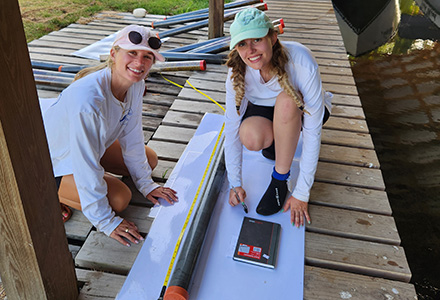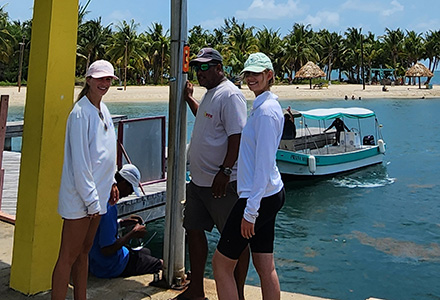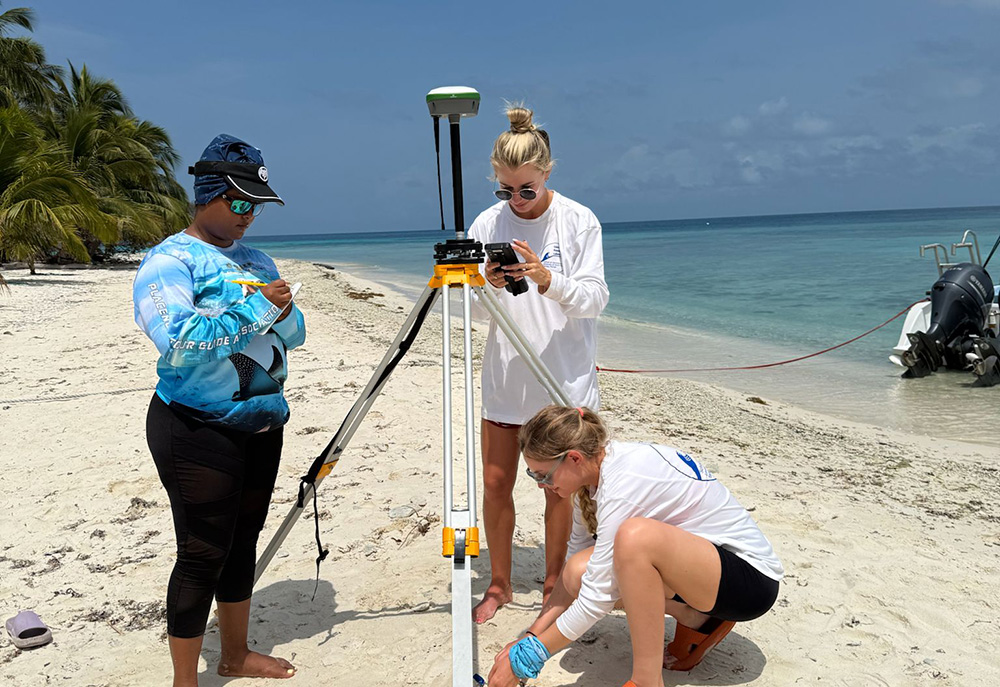By Sarah Sell, University Communications and Marketing
A popular beachfront community in southeastern Belize is seeking help from a team of researchers at USF to address severe beach erosion along the Placencia Peninsula. It is one of several sites, including Biscayne Bay in Miami and the U.S. Virgin Islands, where USF’s extensive expertise in making Tampa Bay’s coastline more resilient is helping others.
The coastal geology team, led by Professor Ping Wang from USF’s School of Geosciences, traveled to the village of Placencia in April and May to collect data and provide solutions for managing erosion. Researchers from USF’s College of Marine Science will head down in June to look at ways to restore mangrove and coral reef ecosystems which help protect the coast.
The fight in Belize has reached a critical juncture, as the disappearing shoreline now threatens homes, infrastructure and the local tourism industry.
Many of the villagers in Placencia believe the shoreline is disappearing because of overdevelopment from the building of houses and resorts along the beach, changing the natural landscape. The issue reached a breaking point recently when residents rallied and dismantled a rock retention wall in front of a newly constructed beach home.

The USF team works on sediment cores taken from the Placencia Peninsula.
In response to the situation in Placencia, the Government of Belize is continuing to work with USF to develop long-term, sustainable solutions.
Wang, an expert in erosion and coastal resiliency with more than 20 years of research experience along Florida’s Gulf Coast, said that interrupting the natural movement of sand can have long-term negative effects. His work helps guide leaders in the Tampa Bay region on where and how much sand to place along the central west coast each year to protect and preserve the shoreline.
“We have one of the most successful beach nourishment projects in the nation, if not the world,” Wang said. “What we have learned here in Florida is that strategically placing sand on the beach is a much better approach than putting rocks or structures on the coast.”
The coastal geology work is part of a bigger project to develop a standardized approach for protecting and restoring coral reef and mangrove ecosystems, which serve as natural barriers against waves, storm surges and erosion. Led by Civil and Environmental Engineering Professor Maya Trotz, the team includes experts in geosciences, environmental engineering, anthropology and marine science, as well as collaborators from six other academic institutions.
The Belize government said it appreciated the research being conducted by USF, calling it instrumental to the success of coastal initiatives.
“The joint team remains optimistic that with the collective efforts of all stakeholders, the rehabilitation and resiliency of the Peninsula can be effectively restored,” the statement said.

The USF team installed a weather station along a pier in the Placencia area that measures wind direction.
The coastal research includes an analysis of the 16-mile-long Placencia Peninsula.
“Our goal is to collect data and identify erosional hotspots, where it appears to be happening more quickly than other areas of the shoreline,” said Libby Royer, a USF doctoral student focusing on nature-based solutions to coastal resilience. “We take measurements of the sea floor, and we can use that data to build a numerical wave model to see how waves influence the shape of the shoreline.”
The data will help determine how much sand is needed to restore Placencia’s beaches. Wang and his team are also collecting sediment samples from different parts of the peninsula to help local officials identify environmentally safe sources for beach replenishment.
“We will meet and talk with the community members and try to share the knowledge that we have and help mitigate the erosion,” Wang said. “We want to give them a nature-based solution and slow down a bit of the panic over there.”
